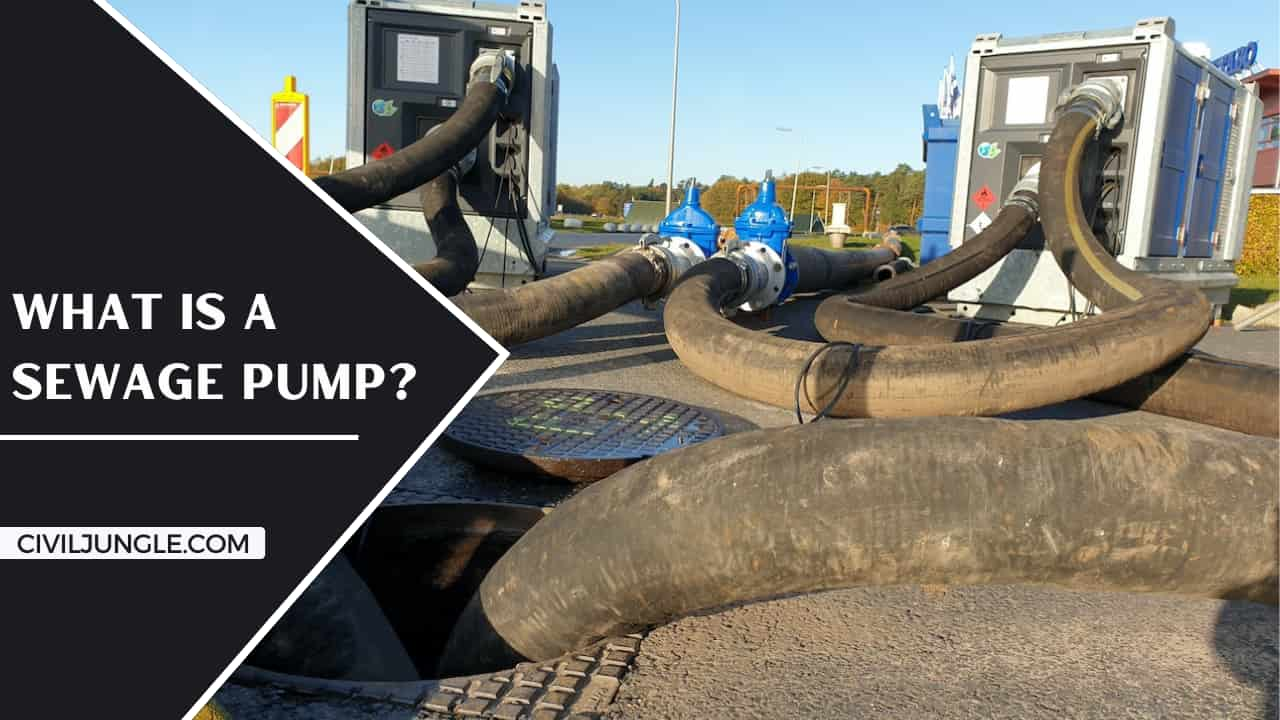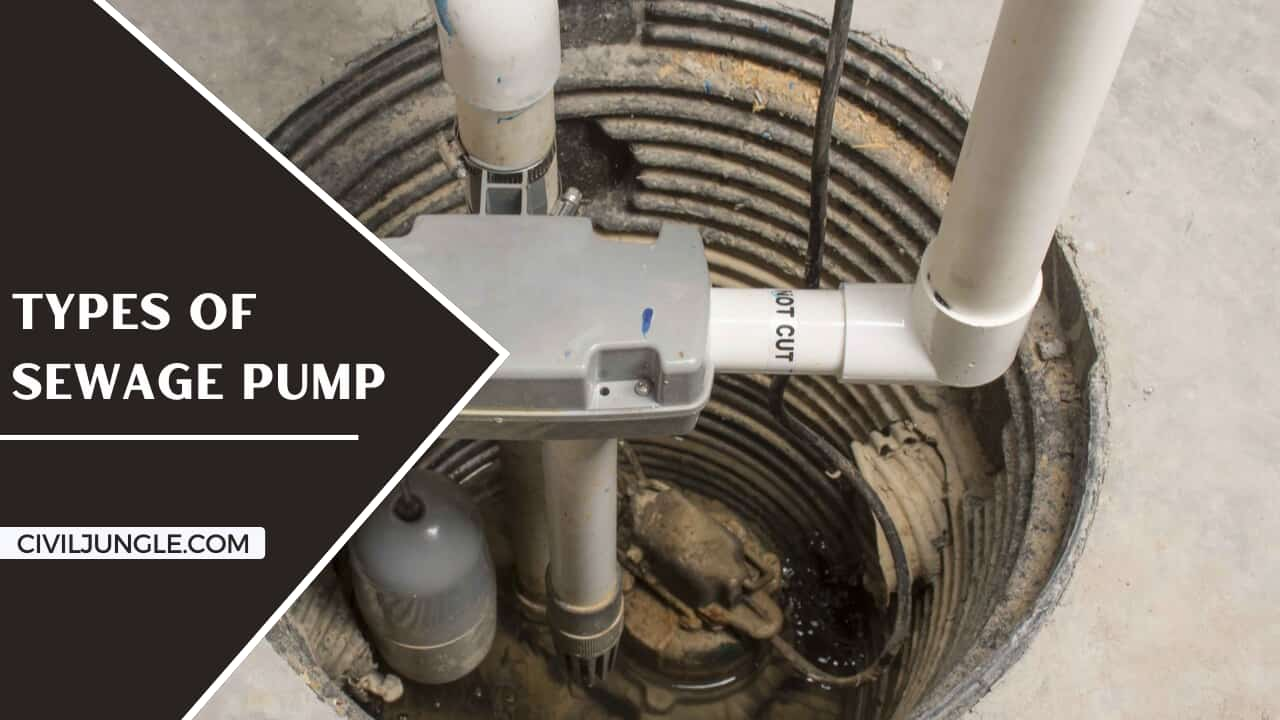What Is a Sewage Pump?
Important Point
A sewage pump will apply to move sewage liquids and stability from one place to other. The main things which may conduct mushy stable up to 2inches in width will pump from sewage pump to a sewer septic tank, and the final application of the sewage pump will design. The pump will generally overflow; it is again a U-boat sewage pump. Involuntary, hand-operated, or two-mode sewage pumps are usable.
A straddling bung on a two-mode pump grant will apply again as automatic. It will approve using an automatic sewage pump interior a sewage tub as the chance of sewage submerging.
Sewage pumps will replace diffusive pumps with a specific model, which grants strong to move by blocking the pump, and while you change on the pump, the engine starts to roll the turbine, forcing water into the turbine and the release pipe. The sewage will strengthen by 10 to 25 feet of electric wire, and the voltage can be 230, 115, 460, or 575 volts based on the design.
Also Read, What Is Building | Types of Building
Types of Sewage Pump
- The Effluent Pumps-effluent pump will be the popular central pump available in little field-level method, and they will calculate to pump effluent that is effluent that passes from a septic tank. The strong have resolved in the septic tank. The branch is a regular liquid because sewage pumps do not have to button sewage rigidly. They can pump at significant volumes and more efficiently than other sewage pumps.
- Solid Handling Pumps– These pumps, even called sewage ejector pumps, would install to pump sewage because raw sewage handles solids and has a rolling machine that cuts and grooves the solids handing pumps when pumping raw sewage.
- Grinder Pumps– A grinder pump is identical to a hard-handling pump. It can bob raw sewage. The grinder pump has the rolling brand, equal to the waste grinder, which slices and grooves the solid little elements besides the sewage will pump.
Also Read, How Much Does Your Home Really Cost?
Advantages and Disadvantages of Sewage Pump
Advantages of Sewage Pump
Their sewage pump has the below advantages.
- It needs an average place for construction.
- It will construct simply.
- These pumps are free to move dependent particles stay in sewage except attaining overloaded.
- The operation method will be easy.
- It is effortless in price.
- This pump cannot harm because of more force.
Disadvantages of Sewage Pump
The sewage pump has the below disadvantages.
- The charge of the pass cannot contain.
- This pump cannot function except for briefing.
- This pump has a bounded pump.
- Some air brokerage on the pump side will harm the edge of the pump.
Which Type of Pump Will Use While Handling the Sludge Disposal System?
Screw pumps use integrating pushed by adjusting kit is beneficial to pass the syrupy liquids. These pumps will pump comprehensive fluid, so it is good to handle sludge.
Also Read, All About Site Preparation | What Is Site Preparation | Types of Site Preparation
How Does a Sewage Pump Work?
Sewage pumps are centrifugal pumps with a special design enabling solids to pass without clogging the pump. When the pump is turned on, the motor starts to rotate the impeller, creating the pressure that pushes water into the impeller and goes into the discharge pipe. The sewage pump is powered through a 10-25 ft.
How Does a Sewage Ejector Pump Work?
Sewage Ejector pumps do not have grinding blades. They use a spinning that intakes the raw sewage through the bottom of the pump and forces it under pressure out of the outlet and into the discharge pipe. Sewage Ejector pumps are generally designed to handle up to 2” diameter solids.
Types of Sewage Pumps
The type of pumps most commonly used at wastewater treatment plants includes centrifugal, progressive cavities, and positive displacement. The three types are listed in Table 1 with the different pump applications.
Types of Wastewater Pumps
The type of pumps most commonly used at wastewater treatment plants includes centrifugal, progressive cavities, and positive displacement. The three types are listed in Table 1 with the different pump applications.
Sewage Ejector Pump Code Requirements
The ejector pit shall be not less than 18 inches (457 mm) in diameter and 24 inches (610 mm) deep unless otherwise approved. The pit shall be accessible and located such that all drainage flows into the pit by gravity. The ejector pit shall be constructed of tile, concrete, steel, plastic, or other approved materials.
What Is the Use of Sewage Pump?
A sewage pump is used to transfer sewage liquids and solids from one place to another. Usually, in residential applications, sewage includes soft solids up to 2″ in diameter is pumped from a sewage basin to a sewer system or a septic tank. A sewage pump is installed at the lowest point of the sewage basin.
Why Would a House Have a Sewage Pump?
Gravity is used to keep the wastewater flowing in the correct direction – away from your home. Now, back into the basement – the drain system can’t rely on gravity. That’s why a sewage ejector pump is needed to force that wastewater up and to either the municipal sewer main or your septic tank.
How Does a Sewage Pump System Work?
Sewage pumps are centrifugal pumps, with special design considerations enabling solids to pass without clogging the pump. When the pump is turned on, the motor starts to rotate the impeller, creating the pressure that pushes water into the impeller and from there into the discharge pipe.
What Is the Difference Between a Sewage Pump and a Sump Pump?
Whilst a sewage pump is defined by its ability to pump away sewage and other materials from a property, a sump pumps sole purpose is to make sure that a properties basement does not flood or retain water at any point. Usually, a sump pump will act as part of a larger basement waterproofing solution.
Do All Houses Have Sewage Pumps?
No, not all homes have a sump pump and sump basin. The level of groundwater and the soil type in your neighborhood will determine whether you need one or not.
What Types of Pumps Are Used in Sewage?
The type of pumps most commonly used at wastewater treatment plants include the centrifugal, progressive cavity, and positive displacement.
Should I Buy a House with a Sewage Pump?
Investing in a sump pump can save you a fortune on potential damages. Having a home that already comes with a sump pump is even better as buying one and installing it yourself can run a few hundred dollars.
How Do You Know If You Have a Sewage Pump?
If you do have a basement or crawlspace, the easiest (but not only) way to see if you have a sump pump is to take a short hike around the exterior of your home. Look for a pipe that’s at least 1-1/4” in diameter protruding through the wall and just hanging out in space.
How Much Does a Sewer Pump Cost?
Expect to pay between $300 and $800 for a sewage ejector pump. You’ll also need to hire a local plumber for installation. Plumbers generally charge by the hour, and the cost to hire a plumber per hour varies between $45 and $200.
How Far Can a Sewage Pump Pump?
Sewage ejector pumps, some can move up to 200 gallons a minute of waste horizontally as far as 750 feet. A sewage pump uses an impeller to provide the head pressure that moves the waste vertically.
How Long Do Sewage Pumps Usually Last?
While most sewage ejector pumps are designed to withstand at least 7 to 10 years of use, with some even lasting much longer, occasionally problems do arise long before the pump has reached the end of its life span.
Does a Septic Tank Have a Sewage Pump?
Waste and sewage is removed from a septic tank into the drain field either through gravity or with the help of a septic system lift pump. Generally, a septic pump isn’t needed if the waste can flow at a rate of at least two-feet per second with gravity only.
Does My House Have a Sewage Pump
If you do have a basement or crawlspace, the easiest (but not only) way to see if you have a sump pump is to take a walk around the exterior of your home. Look for a pipe that’s at least 1-1/4” in diameter sticking through the wall and just hanging out in space. If you find one, that may be a sump pump discharge line.
Like this post? Share it with your friends!
Suggested Read –
- Types of Sewage
- Types of Kitchen Faucets
- What Are an Arch | 21 Different Parts of an Arch
- What Are Calacatta Quartz | 12 Types of Calacatta Quartz
- All About Pony Wall | What Is a Pony Wall | Uses of Pony Wall | Pros and Cons of Pony Wall
- Top-Down Construction | What Is a Top-Down Construction | Advantages &# Disadvantages of Top-Down Construction
Originally posted 2022-08-29 21:51:10.




Leave a Reply